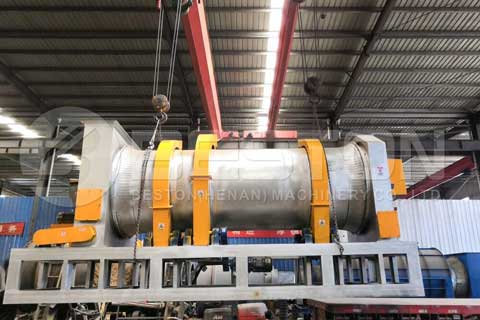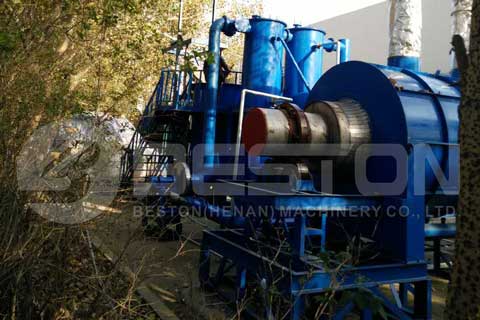Increased levels of urbanization both across the developed world and in the developing world have placed urban infrastructure under increased pressure. The sludge treatment plant becomes a hot product. The close proximity of so many human beings in the close confines of cities has meant that disposing of sewage has become a challenge that must be addressed. Prior to the 1950s many of the globe’s largest cities were simply dealing with wastewater and sewage by discharging it into rivers and streams – often without treatment of any kind. The sewage sludge carbonization plant is a good way to handle these wastes.
Without the technology and the infrastructure to treat sewage sludge the incidence of water-borne diseases such as cholera skyrockets – and those rivers and streams begin to die. The knock-on effect of this is felt by communities across the world – especially in poorer countries where those assets are the main source of potable water.

Fortunately, the science and design behind sewage sludge treatment facility continue to improve. The modern sewage sludge treatment plant uses a variety of strategies to treat effluent and wastewater. You can also choose carbonization as the primary way to treat the sewage sludge and you will also get clean fuel from it. By the way, this kind of technology can also be used to process solid waste, which you can find from waste carbonization machine.
The aim of the sewage sludge treatment plant is to produce an end product that is suitable for use in a variety of situations – including for use as fertilizer in agriculture. this is accomplished through a variety of means.
The wastewater is first subject to a screening process where large material such as rags, cloth, sanitary products, glass bottles, and paper – even naturally occurring material such as sticks and other organics are removed. The second stage is a finer screening where matter such as grit and sand are screened out.

The next step in the process is referred to as the ‘Primary Treatment phase. This consists of both settling and ‘floatation’ approach. Heavier material settles to the bottom of the settling ponds that hold the semi-liquid organic and inorganic waste that is being treated. Other material that is lighter than water such as petroleum products, wood and vegetation float to the top. this floating material is skimmed off and plays no further part in the treatment process. The material that has sunk to the bottom of the tanks is removed. This is now known as the ‘Primary Sludge’.This material is generally referred to as inorganic solid waste. This material is collected and is generally deposited at various landfill sites.
As mentioned previously intensive treatment may make sewage sludge suitable for land application. where this is not feasible incineration or disposal in landfills are two of the most widely explored options.
As population density increases new, and more effective methods of dealing with wastewater and sewage need to be researched and identified. It is no exaggeration to say that if this does not happen, the health of both the human race and the natural environment will remain under threat.
Leave all your questions about the sewage sludge treatment to Beston, one of the best waste to energy manufacturers in China and you will get what you want for the technology.